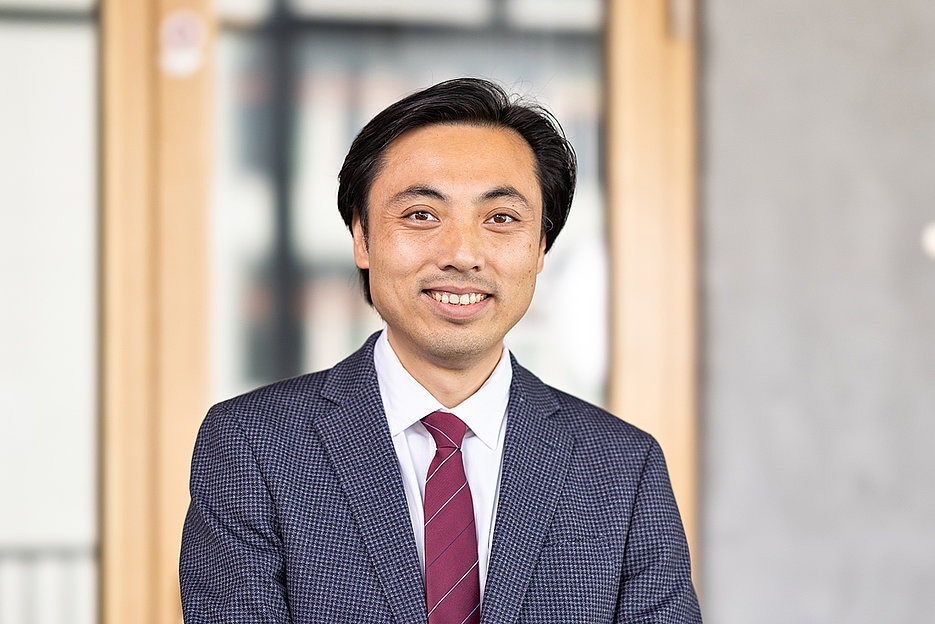Using boron-containing molecules, Qing Ye, a chemistry professor, likes to attain fundamental innovations. For this, he has collected significant financial support comprising positions for Ph.D. students.
 Qing Ye returned to the University of Würzburg as a chemistry professor at the beginning of 2022. He was here before as a student, PhD student, and postdoc. Image credits: Christoph Weiss / Universität Würzburg
Qing Ye returned to the University of Würzburg as a chemistry professor at the beginning of 2022. He was here before as a student, PhD student, and postdoc. Image credits: Christoph Weiss / Universität Würzburg
At Julius-Maximilians-Universität Würzburg (JMU), the foundation for a new generation of chemical catalysts may be established. Professor Qing Ye is examining the molecule class of bisalkynyl boranes here. He states, “They have been little studied so far compared to other boranes, and I see great potential for fundamental innovations in them.”
The German Research Foundation (DFG) also observes this ability. It has approved 415,000 euros to the chemistry professor for a project to examine bisalkynyl boranes. Ye can fill two doctoral roles for three years using this money. Right now, he is searching for interested Ph.D. students.
Many Years of Würzburg Experience
At the start of 2022, Qing Ye was appointed at JMU as a Professor of Inorganic Molecular Chemistry. Having spent much of his academic career in Würzburg, he knew this place well.
In 2004, he came from his home country China as a chemistry student to the University of Würzburg. He got his diploma and did his doctorate with Professor Holger Braunschweig. As a postdoc, he also did research here.
Qing Ye spent 2015 on a DFG fellowship at the University of California at Berkeley. Then, he came back with a DFG return fellowship to Würzburg. He agreed to a professorship at the Southern University of Science and Technology in Shenzhen (China) in 2017. He did research and taught there for five years, then returned to JMU again.
Ligands for Chemical Catalysts
What are bisalkynyl boranes exactly about? Why does the professor find so much capacity in them?
The boron-containing molecules are ideal as catalyst components. Many people initially think of exhaust gas purification present in cars. Instead, chemists comprehend catalysts as complex molecular structures that enable chemical reactions or even make them feasible in the first place.
Therefore, developing catalysts that make products in the pharmaceutical and chemical industry more sustainable is highly needed.
Catalysts built of metal complexes and supposed ligands—tiny molecules surrounding the metal atom—are usually identified in catalysis because they exhibit high selectivity and activity.
The team of Qing Ye synthesizes several bisalkynyl boranes and assesses them for their compatibility as ligands. The team is assessing various metal-ligand combinations and then examining their properties to do this.
“Titanium and zirconium are often used as metal centers in catalysts. Together with them, the bisalkynyl boranes work well,” states Professor Ye. Although the resulting complexes are stable, they are also sufficiently reactive to be considered for catalysis, he states.
Possible Applications in Optoelectronics
Another attractive property of bisalkynyl boranes was found during the chemist’s research. “Some of them rearrange themselves after you connect them to a metal center. We can detach them from the metal again and get novel structures with completely new properties in a relatively simple way.”
A few new boron-containing molecules strongly fluoresce, making them interesting for use in optoelectronics. “If you wanted to synthesize these structures, which have virtually come into being on their own, through traditional methods, it would not be very easy,” adds the professor.
Another DFG Project Underway
Recently, Qing Ye was granted another research project by the DFG, providing 240,000 euros. He can fill one doctoral position for this project. The project focuses on the synthesis and investigation of benzoborirenes. “This is a class of ring-shaped molecules with exceptionally high ring tension and a unique electron structure,” he concludes.